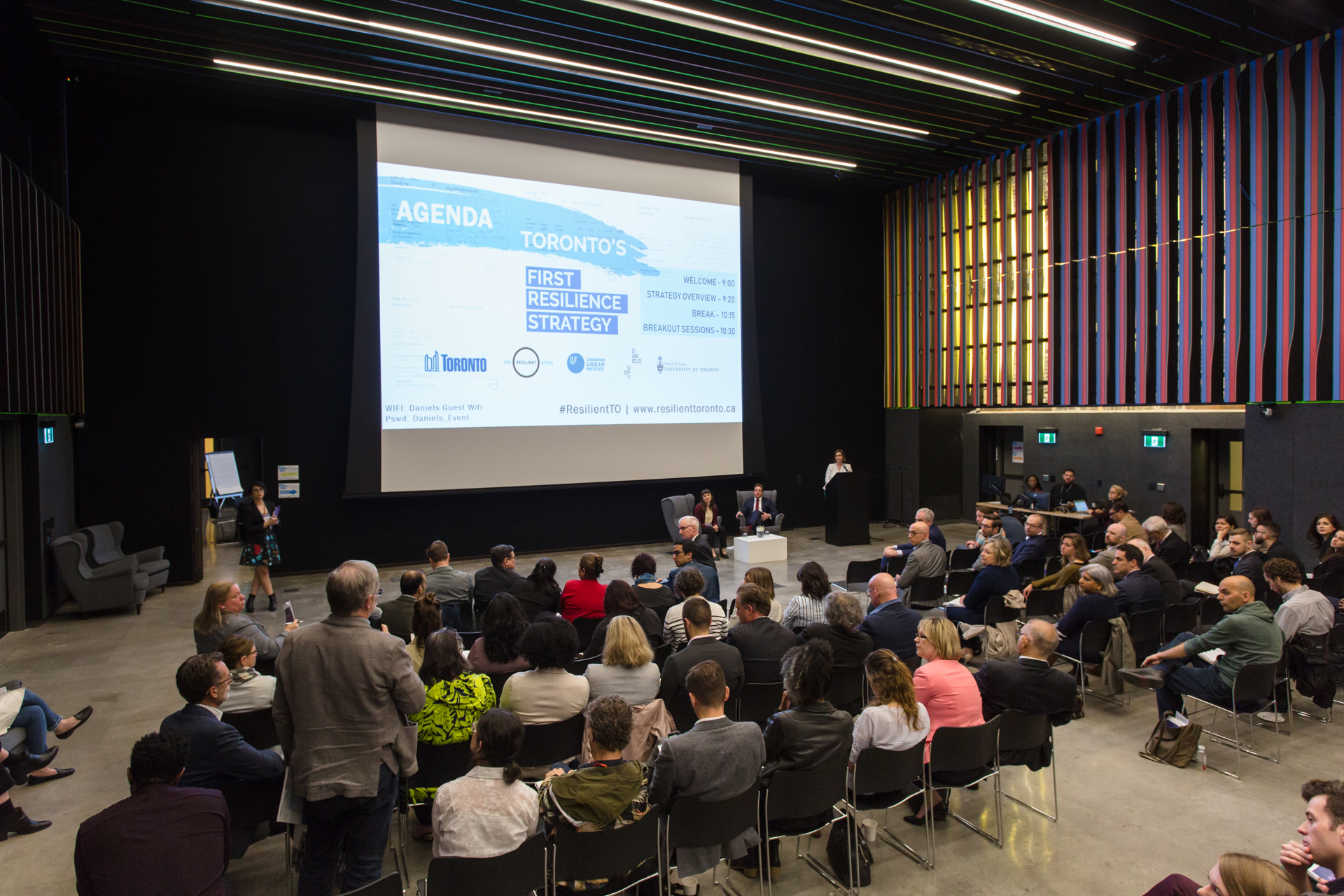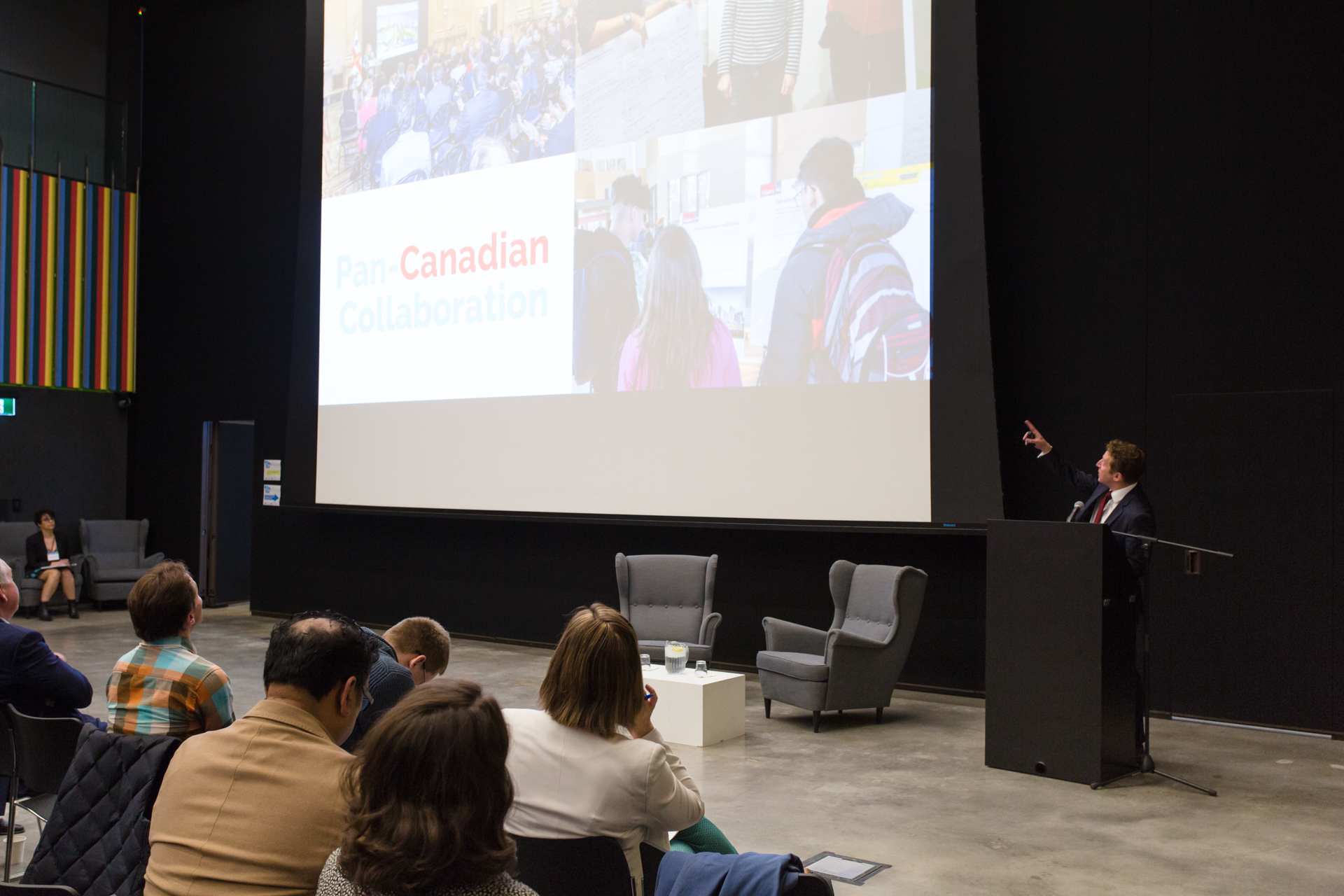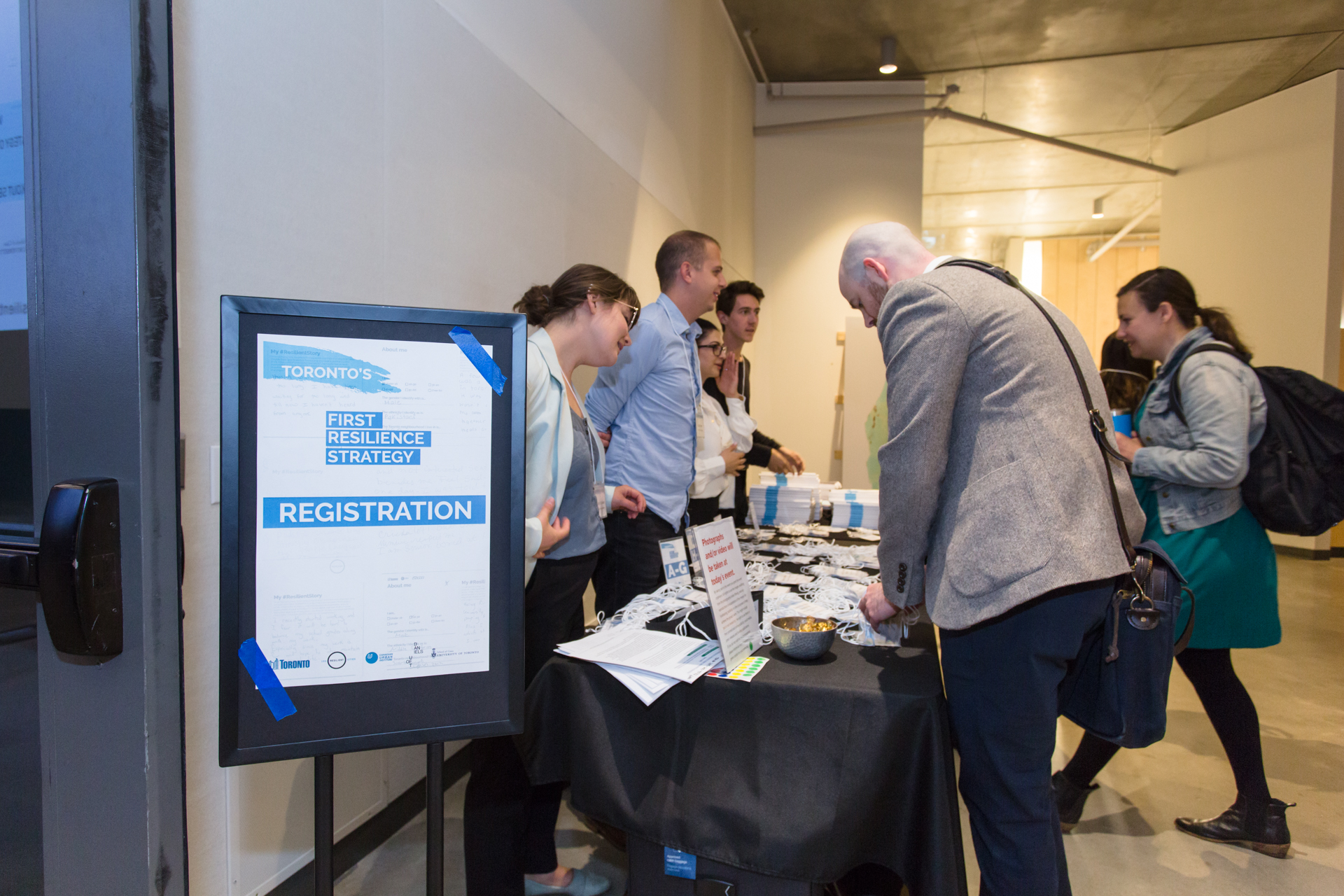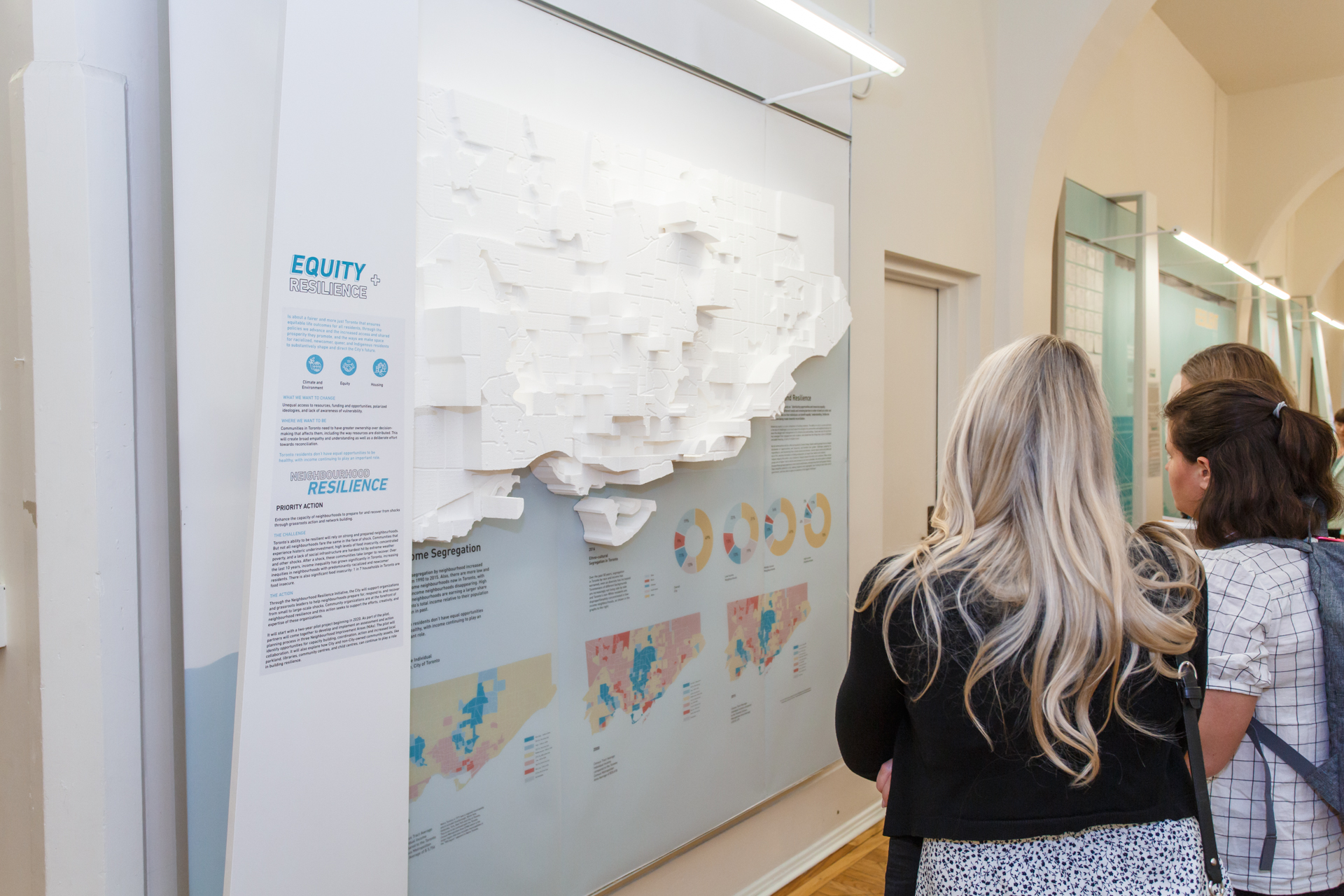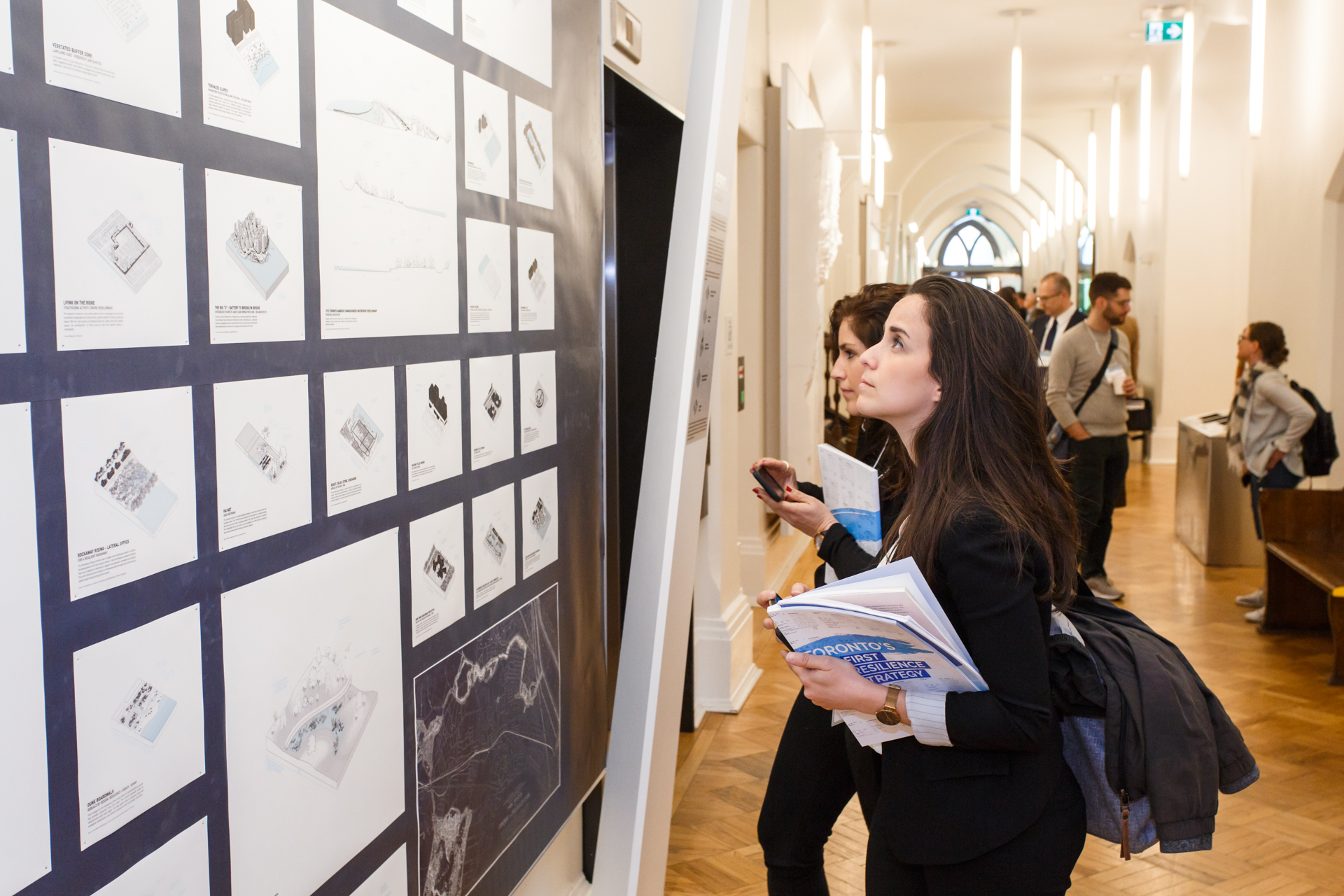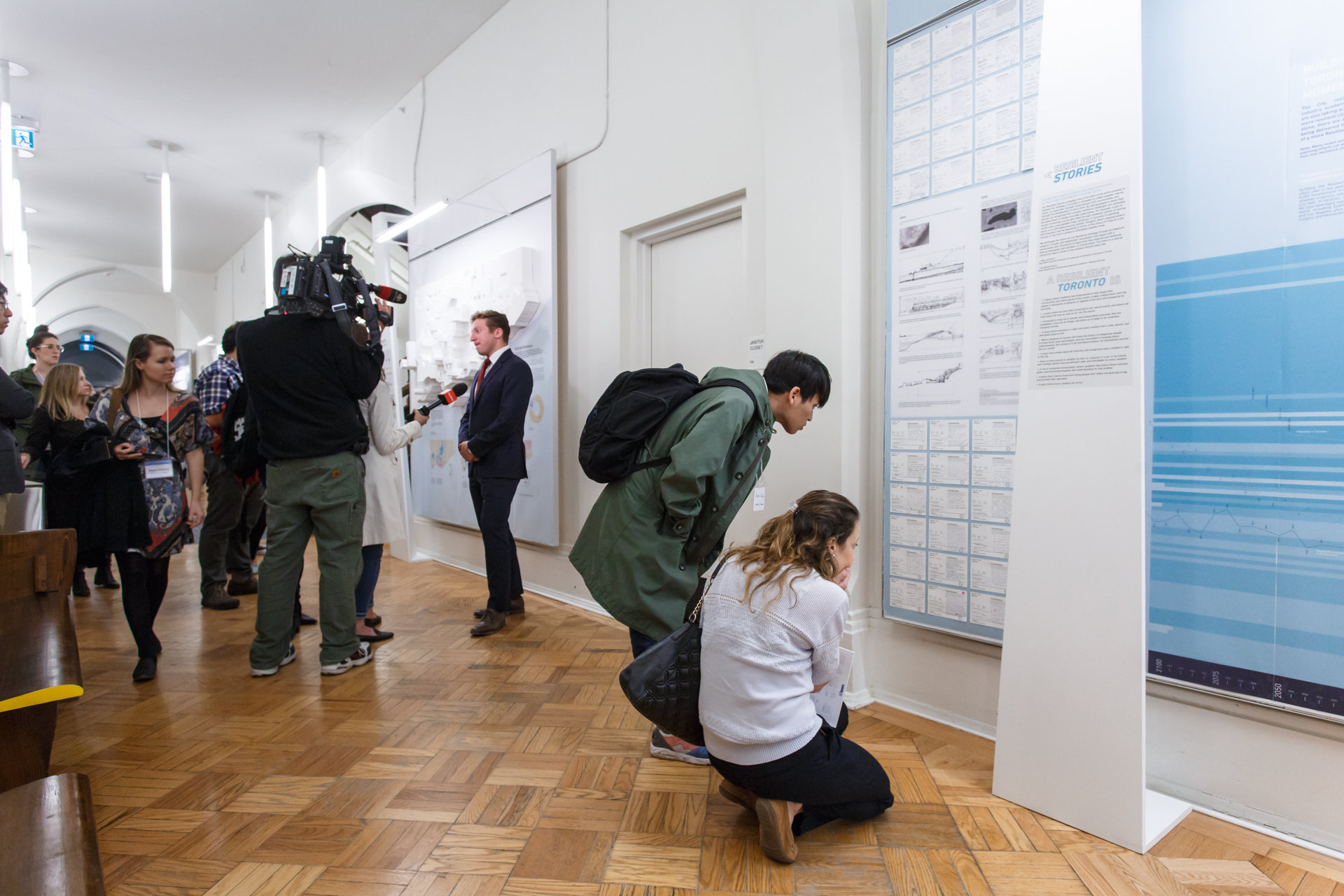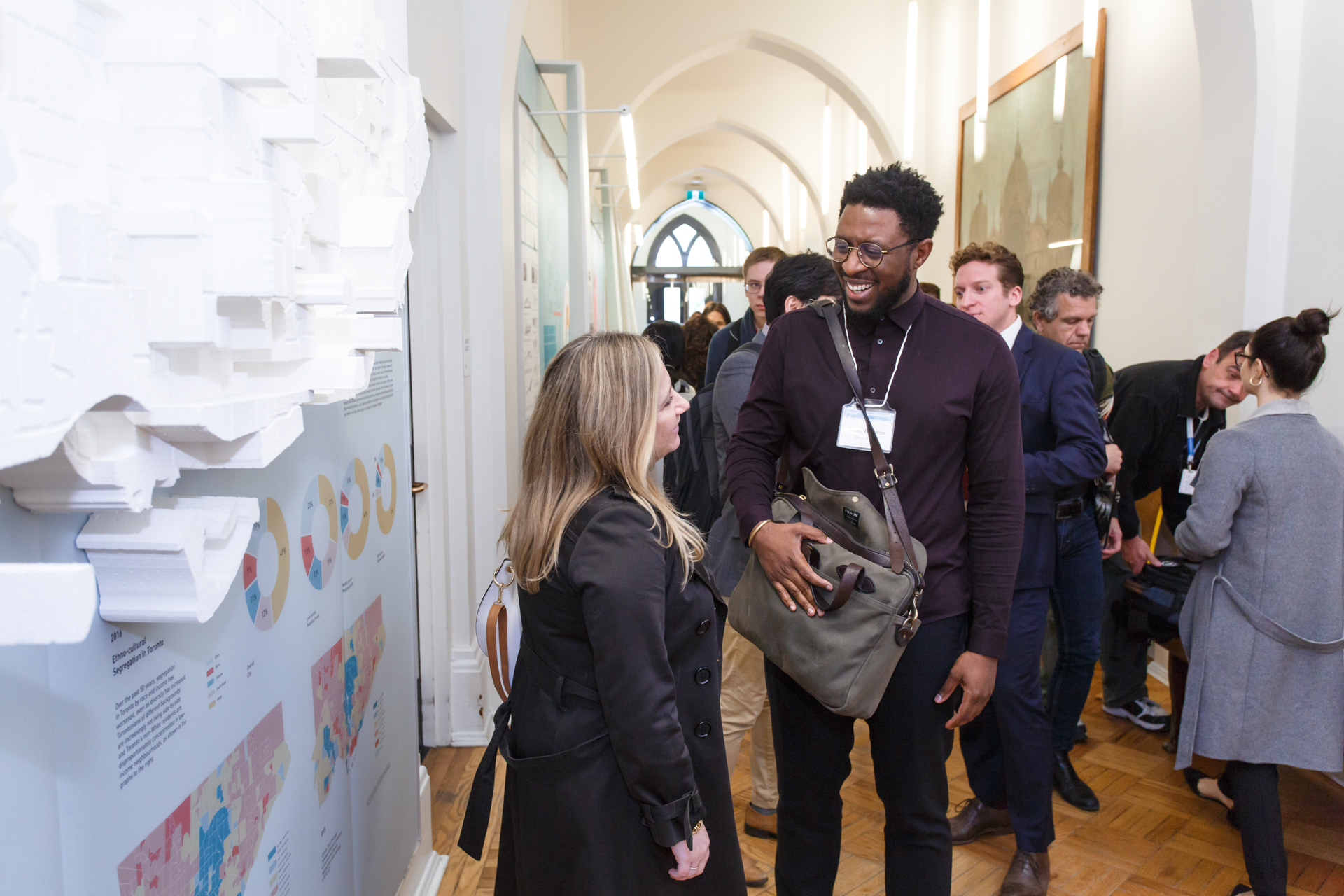03.06.19 - Toronto launches its first Resilience Strategy at the Daniels Faculty
In Toronto, 91% of residents agree that climate change threatens personal health and well-being. But while the vast majority of those in Canada’s largest city understand that more extreme weather is on its way, 48% of Torontonians don’t know what can be done to address it.
How do we as a city prepare for greater instances of flooding and extreme heat, as well as increasing inequality that can exacerbate our ability to bounce back?
To address this question, the City of Toronto has developed its first ever Resilience Strategy, launched June 4 at the Daniels Building. An exhibition highlighting the work of the strategy — and how design can contribute to building a city that is better able to adapt, survive, and thrive in the face of growing challenges — is also now on display in the first-floor heritage hallway of One Spadina Crescent.
Assistant Professor Fadi Masoud (MLA 2010), whose research focuses on coastal urbanism, adaptive climate planning, resilient infrastructure, and design responses to urban flooding, was part of the Flood Resilient Working Group that contributed to the Strategy. He also curated the Resilient TO exhibition on display until Aug 1st, 2019.
“We wanted to showcase what the physical city could do to increase resilience,” says Masoud. “Our exhibition showcases the elements of the strategy related to the built form of the city and how design can contribute to meeting the strategy’s goals.”
Masoud was among the many community members, organizations, industry representatives, and government leaders at the Daniels Building June 4 for the Strategy’s launch. Toronto’s Chief Resilience Officer Elliott Cappell emphasized the importance of breaking down silos within the city, connecting the dots, and leveraging partnerships to move forward on the actions laid out in the report.
He also emphasized that flooding in Toronto is a major issue. To this end, Masoud and other members of the Flood Resilience Working Group created and signed a Charter that details their shared vision for flood resilience in Toronto.
“Unlike cities that are coastal, Toronto isn’t affected by sea level rise or storm surge, and we know how to manage riverine flooding though our conservation authorities. Our issue is surface flooding,” says Masoud. “The faster our city is growing and the more we are paving, the fewer places there are for water to go. We also have episodic extreme precipitation, but our watershed and flood maps have not been updated for a long time.”
Anchoring the exhibit are two large models that represent two of the fundamental pillars of the Strategy: equity and urban flooding. One model shows the City’s increasing inequality based on research by U of T Professor David Hulchanski; the second shows Toronto's topography, the hills, ravines, and river systems that affect where water flows.
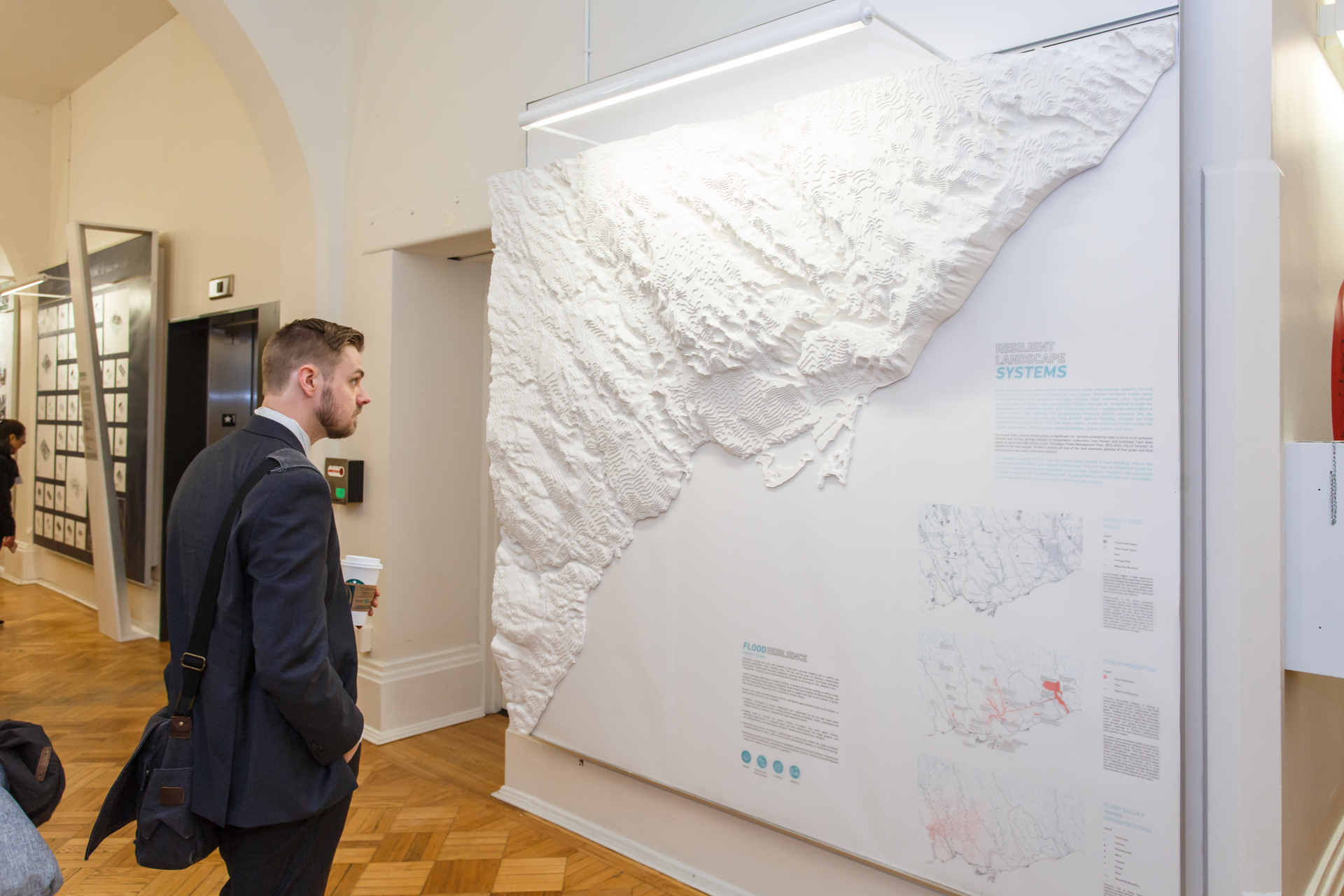
“A lot of people think Toronto is pretty flat,” says Masoud. “but the reality is that the terrain of our city, what is upstream and what is downstream, has huge localized impacts on the city.”
He says there is huge potential to design networks of greenspace, both public and private, to serve multiple functions and to act as water retention systems.
While the threats to our resiliency are well laid out, the exhibition also highlights possible solutions, including award-winning design ideas proposed by Daniels Faculty students for a county in South Florida; urban design research on Toronto’s apartment tower clusters, which make up 45% of the city’s market rental housing stock; and the Faculty’s Green Roof Innovation Testing Laboratory (GRIT Lab) research that has helped informed Toronto’s pioneering Green Roof bylaw.
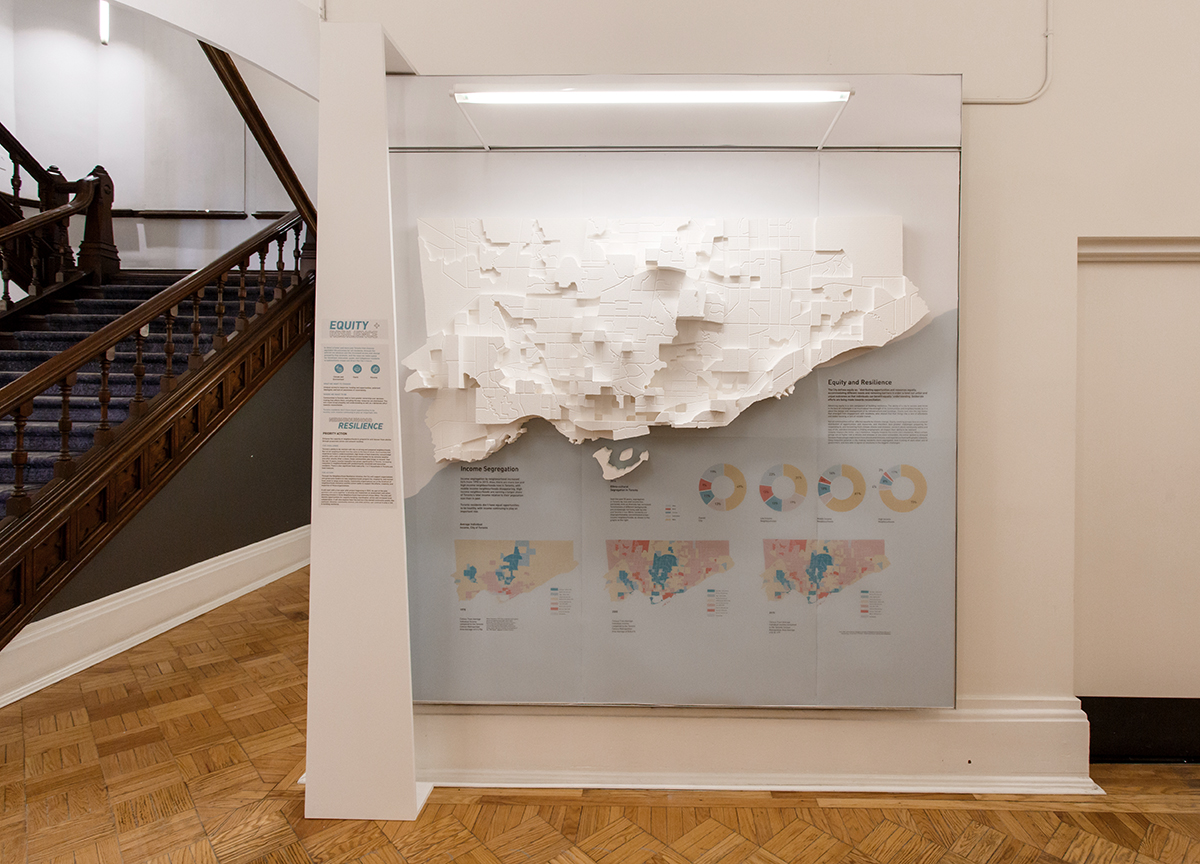
When asked at the launch event about the key take-aways from the Resilience Strategy, Cappell stressed that although the city as a whole is getting hotter, wetter, and wilder, residents throughout the city experience these things differently. Understanding how inequity influences a community’s resiliency is key. Lower income neighbourhoods are likely to be harder hit.
How is the concept of resilience integrated into research and teaching at the Daniels Faculty?
“Resilience is a framework that should set the tone for everything,” says Masoud. “It means that a system, building, or landscape, has to be able to bounce back and bounce back better than how it was before it faced stress, whether economic, social, or environmental. As designers, we need to build in flexibility to make sure that whatever is designed can respond to various pressures. Resiliency should be something that describes all designs.”
Click here to read the full Resilience Strategy.
The Daniels Faculty would like to thank the following sponsored of the Resilitent TO exhibition: Canadian Urban Institute and ResilientTO, School of Cities, Faculty of Forestry, University of Toronto, Autodesk, and Jay Pooley Design Practice.
Photos by Harry Choi


